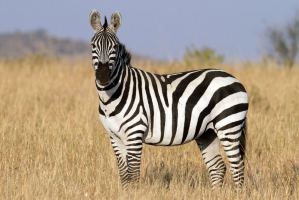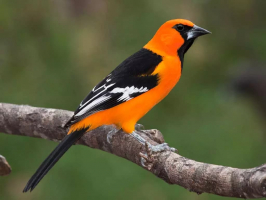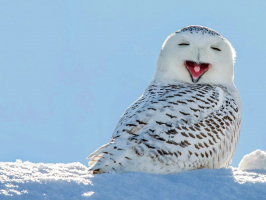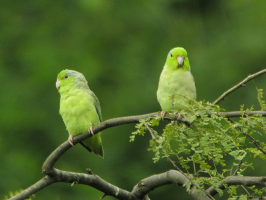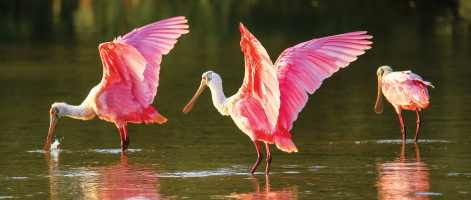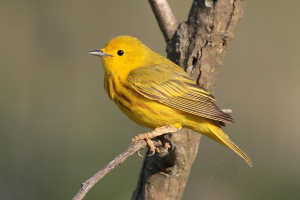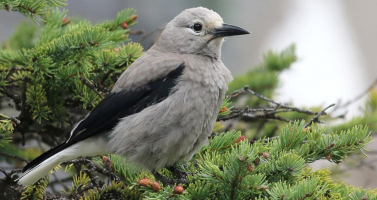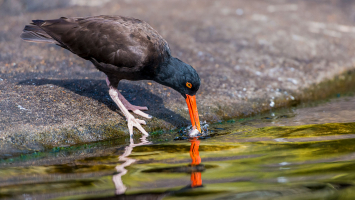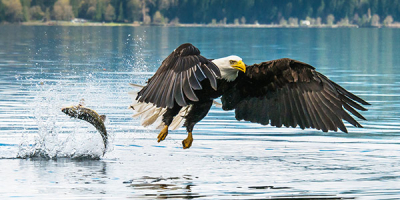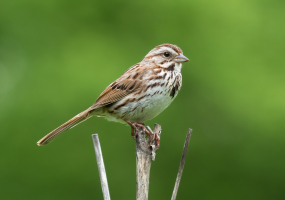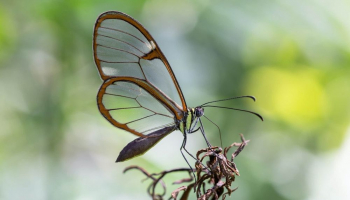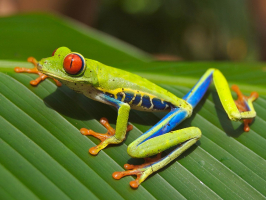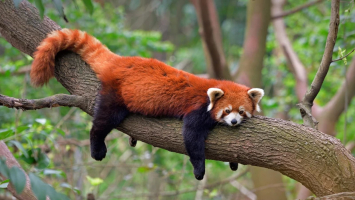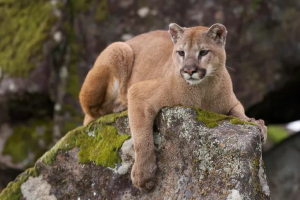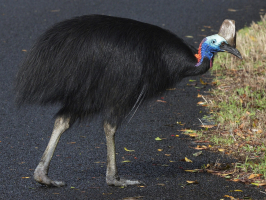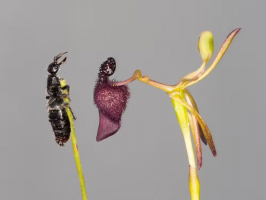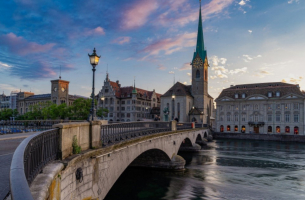Top 10 World's Beautiful Black And White Birds
The Earth is home to countless bird species possessing different colors, attractive patterns, amazing feeding habits, mesmerizing habitats, and distribution. ... read more...In addition to the numerous colorful bird species, the planet is also home to a lot of black and white birds. Below is a list of the most beautiful black and white birds in the world, let's find out!
-
The Black-Billed Magpie (Pica hudsonia), also known as the American magpie, is a bird in the Corvidae family found in the western half of North America. It is predominantly white and black, with iridescent blue or blue-green flashes in the black portions of the wings and tail. It is one of only four songbirds in North America whose tail is half or more of its whole length (the others being the yellow-billed magpie, the scissor-tailed flycatcher, and the fork-tailed flycatcher).
This species favors settings that are mainly open and contain groups of trees. As a result, it can be found in rural and suburban regions where it frequently interacts with people. Where it is being persecuted, it gets extremely apprehensive, but otherwise, it tolerates people rather well. It used to land on the backs of bison herds, but now it flies above livestock in search of insects and ticks. Black-billed magpies frequently accompany large predators like wolves as they scavenge from their kills. The species forages for food such as beetles, grasshoppers, worms, and small rodents by walking or hopping on the ground.
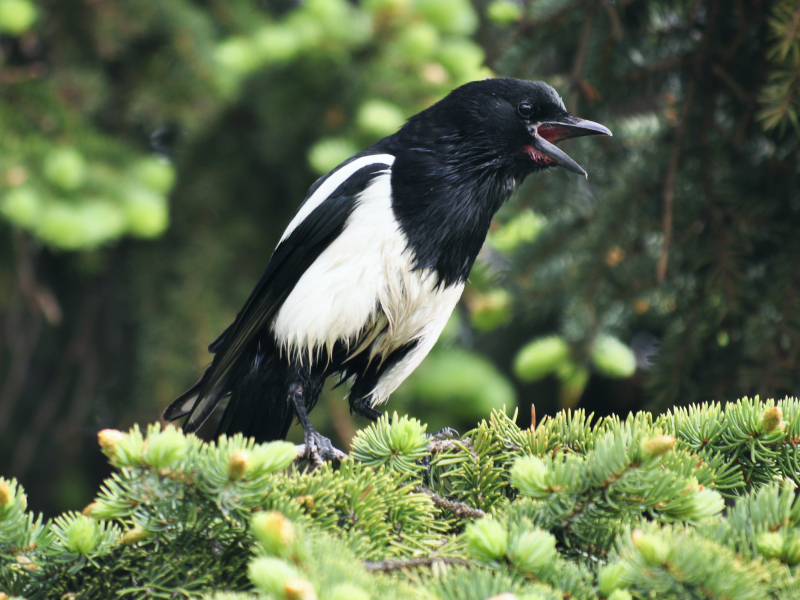
Wikipedia 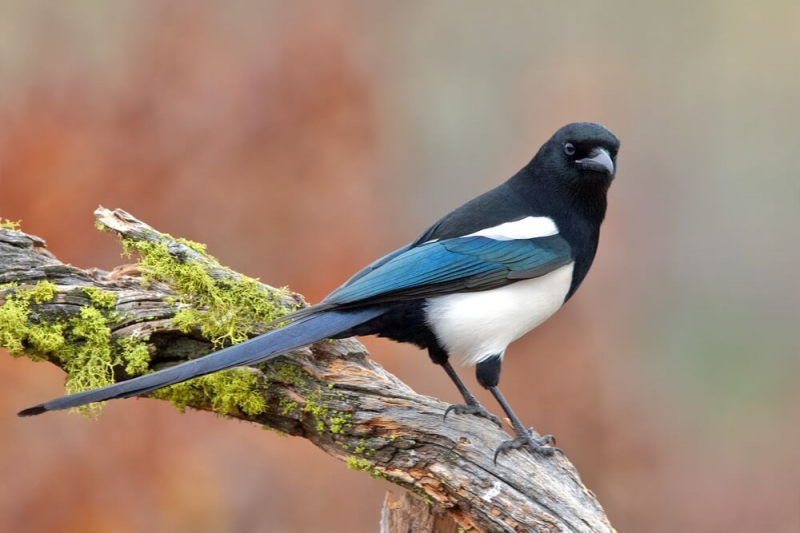
Montana Natural History Center -
The Pied Bush Chat (Saxicola caprata) is a small passerine bird found ranging from West Asia and Central Asia to the Indian subcontinent and Southeast Asia. A total of sixteen subspecies are known due to the large geographic distribution and several island variants. It is a common bird found in rural areas, open scrub, or grasslands where it perches on small thorn trees or other shrubs to scan the area for insect prey. They were once classified as members of the Turdidae thrush family, along with other chats, but are now thought of as old-world flycatchers.
Although it has a similar dumpy shape and upright stance to the Siberian stonechat, Saxicola Maurus, the pied bush chat, at 13 cm, is only marginally smaller. The lower belly, wing patch, and rump of the male are white. The beak and legs are black, while the iris is dark brown. The female is dull brown with a few faint streaks. The underside of juveniles is scaly, while the top is dark like that of females. They nest in cavities in stone walls or in holes in an embankment, lining the nest with grass and animal hair.
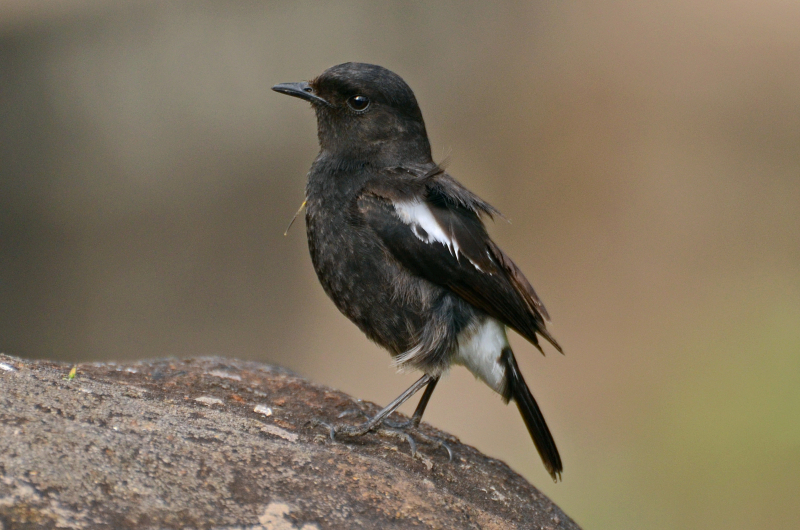
Wikipedia 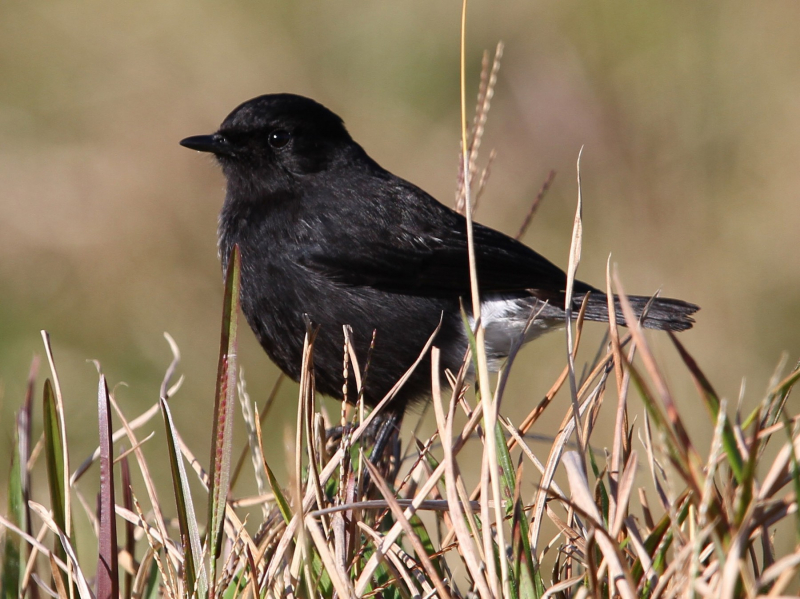
eBird -
The White Hawk (Pseudastur albicollis) is a bird of prey breeding in the tropical new world of the family Accipitridae. This bird inhabits lowland forests and other types of woodlands. From southern Mexico to Central and South America to Peru, Bolivia, and Brazil, it covers a wide area. The whole Amazon basin in central South America, extending from the Andes on the west to the Guianas on the Atlantic on the northeast, and to the transition regions to the south, is within the range of the white hawk. It is a widespread species that is often not common, although the IUCN does not classify it as globally threatened due to the size of its distribution.
The adult white hawk has very broad wings and a head, body, and underwings that are all white. Its length is between 46 and 56 cm. The very short tail is black with a wide white band, and the upper wings are all black. The legs are yellow, while the bill is black. The sexes are identical, however, women weigh 840 g as opposed to men's 650 g, making them larger and heavier. The upper parts of immature birds are heavily speckled with black, while the underparts are streaked with dark color.
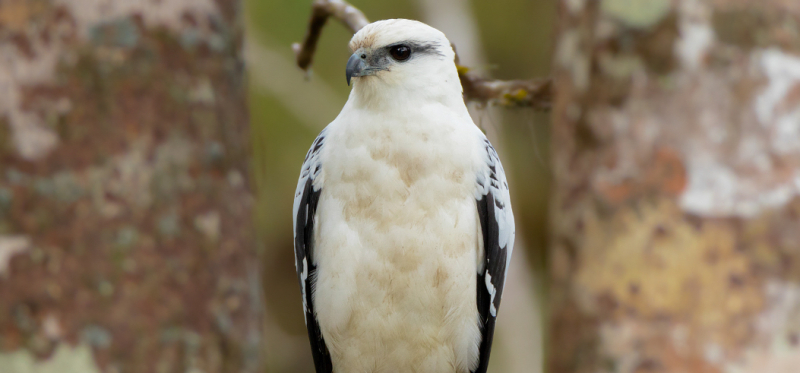
The Canopy Family 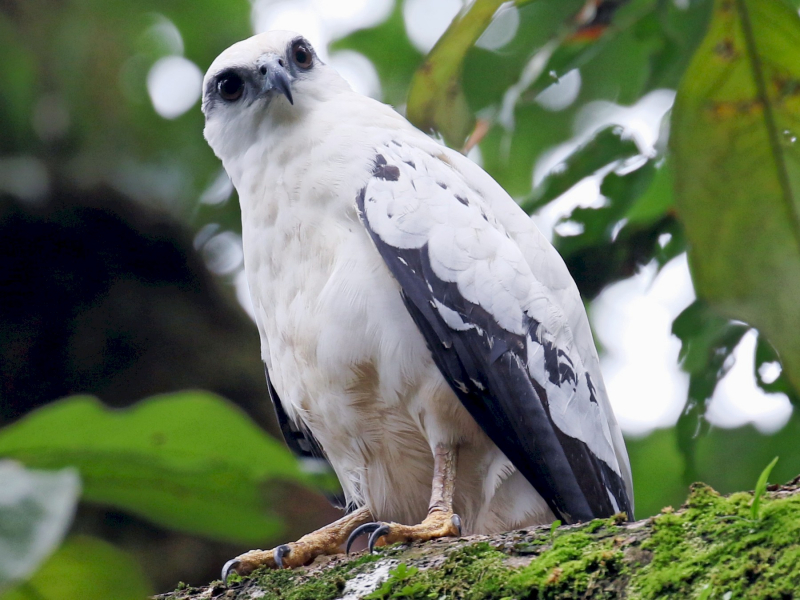
eBird -
The Black-and-White Warbler (Mniotilta varia) is a species of new world warbler, and the only member of its genus, Mniotilta. It breeds in northern and eastern North America and winters in Florida, Central America, and the West Indies down to Peru. This species is a very rare vagrant to western Europe.
Black-and-white warblers are just as their name suggests—they are black and white. Both sexes have white eyebrows, white belly streaking, black wings with two white wing bars, black tails, black and white streaked backs, streaky under tail coverts, and grey-black legs and feet. While females have a grey cheek and a white-cream-colored throat and flanks, breeding males have a black and white striped throat and black cheek. While first fall females resemble adult females but with less streaking and a more pronounced buffy wash, first fall males share many of the same colors and patterning as adult females. Juveniles are strongly marked but otherwise resemble first-fall individuals.
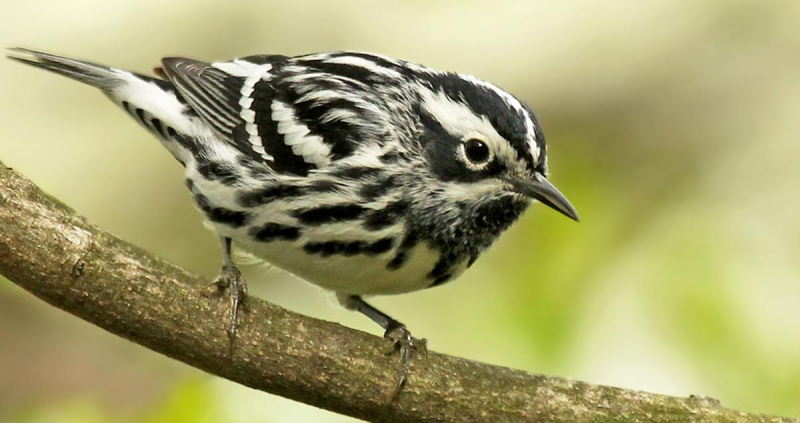
All About Birds 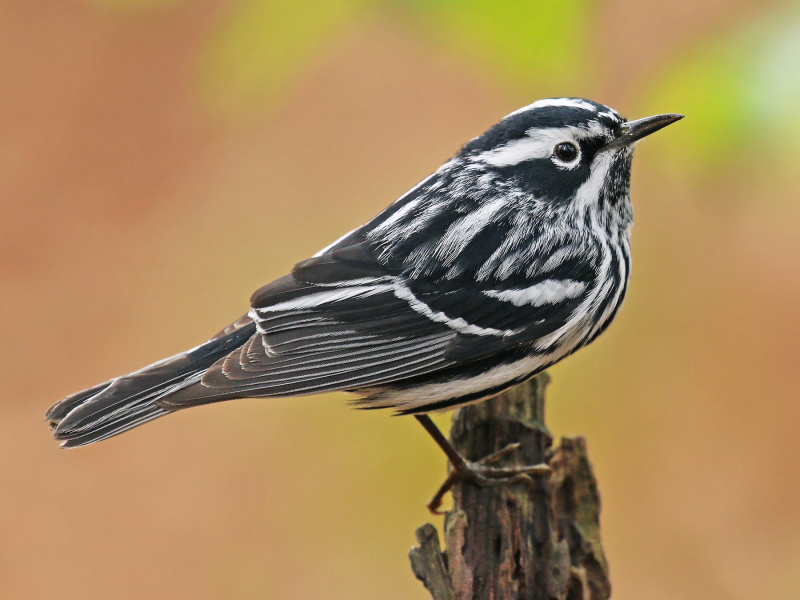
eBird -
The Pied Avocet (Recurvirostra avosetta) is a large black and white wader in the avocet and stilt family, Recurvirostridae. They breed in temperate Europe and across the Palearctic to Central Asia then on to the Russian Far East. It is a migratory species, and the majority spend their winters in southern Asia or Africa. Some species continue to spend the winter in the driest regions of their range, such as southern Spain and southern England. The Agreement on the Conservation of African-Eurasian Migratory Waterbirds (AEWA) applies to a number of species, including the pied avocet.
A beautiful white wader with dramatic black patterns is the pied avocet. Adults are covered in white feathers, with the exception of a black helmet and black spots on the wings and back. They have long, bluish legs and long, upturned bills. Its length is roughly 41.9–45.1 cm, with a beak that is 7.5–8.5 cm long and legs that are 7.6–10.2 cm long. Its wingspan ranges from 76 to 80 cm. Both sexes have similar appearances. The juvenile and adult are similar, although the juvenile has more sepia and greyish tones.
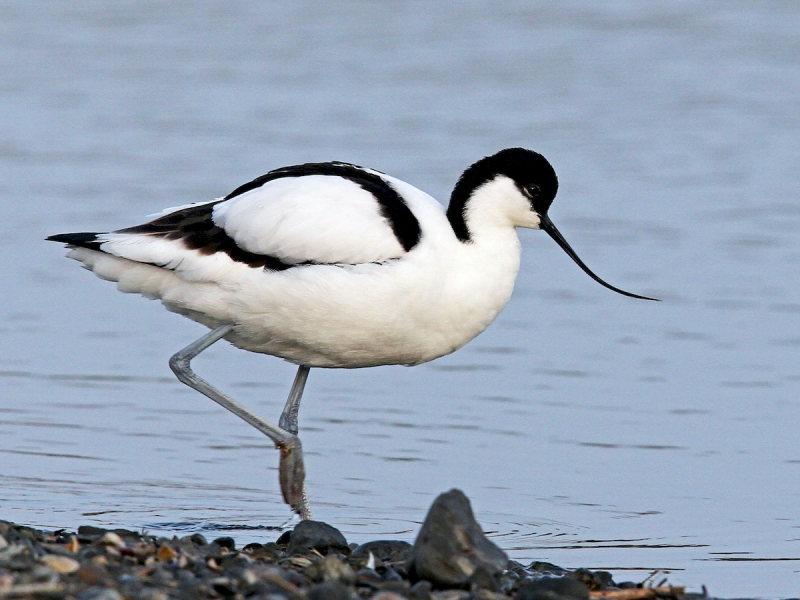
eBird 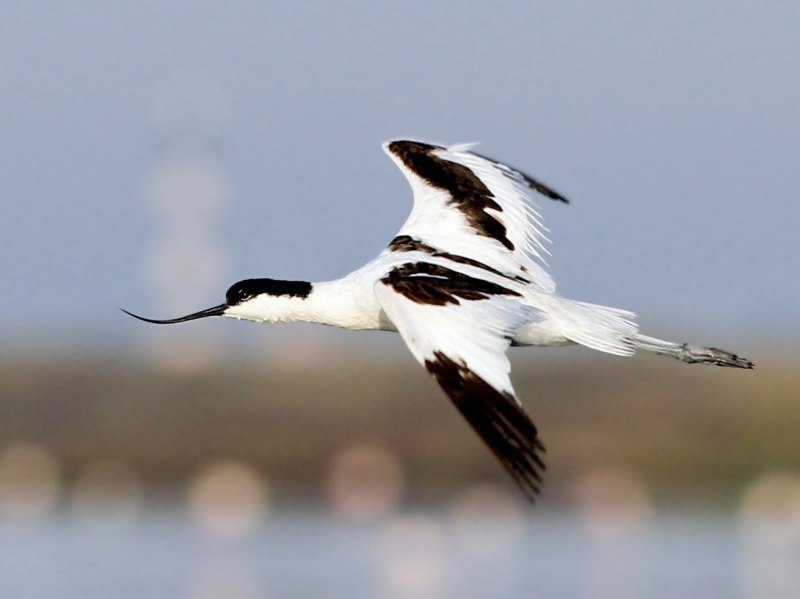
eBird -
The Indian Paradise Flycatcher (Terpsiphone paradisi) is a medium-sized passerine bird native to Asia, where it is widely distributed. As the global population is considered stable, it has been listed as Least Concern on the IUCN Red List since 2004. It is native to the Indian subcontinent as well as Central Asia and Myanmar.
Indian paradise flycatcher adults have a length of 19–22 cm. They have glossy black heads with a black crown and crest, a big, robust black bill, and black eyes. Females have a rufous back and underparts and a grayish neck. They have 86–92 mm-long wings. Male adults have either a brilliant rufous coloration on top or are mostly white. Some specimens have a degree of intermediate rufous-to-white coloration. The shaft streaks on the wing and tail feathers of long-tailed rufous birds are typically absent, whereas in white birds, the shaft streaks, and occasionally the edges of the wing and tail feathers, are black.
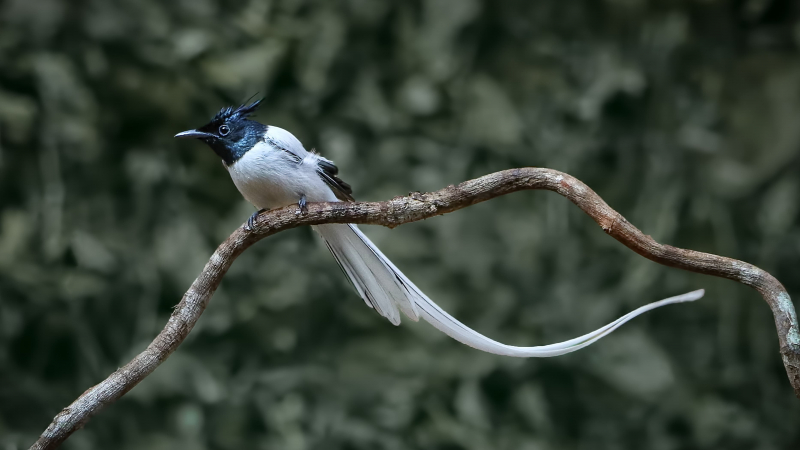
CGTN 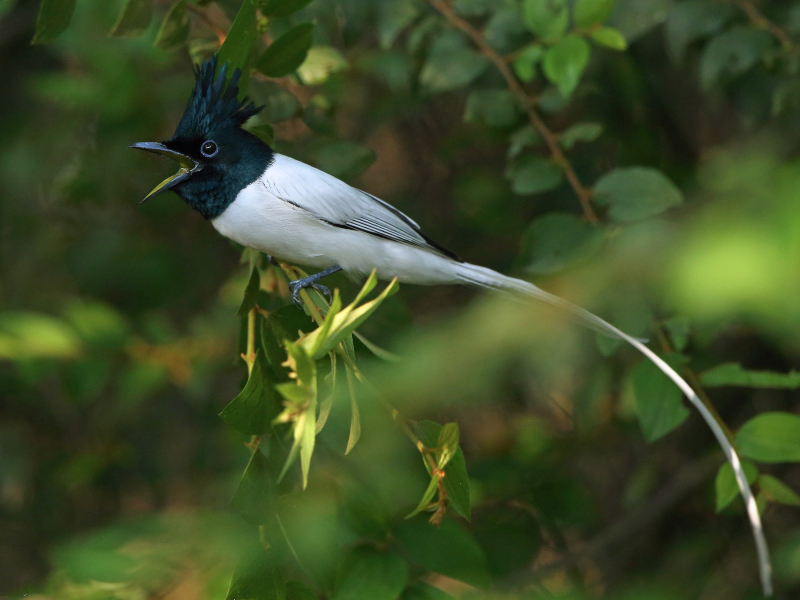
eBird -
The White-Browed Wagtail or large pied wagtail (Motacilla maderaspatensis) is a medium-sized bird and is the largest member of the wagtail family. The white-browed wagtail is indigenous to the Indian subcontinent and a resident breeder there. It can be found west of Bangladesh, east of the Indus River, and south of the Himalayas. It inhabits habitats of open freshwater wetlands. It is one of the few Motacilla wagtails that has successfully acclimated to urban environments, and it is frequently spotted perched on water storage in residential buildings.
With a length of 21 cm, the white-browed wagtail is the largest species of wagtail. It is a thin bird with a long, continuously waving tail that is unique to its species. Its head, breast, and upper parts are all black, while its broad white wing bar and supercilium are white. It never has white on the forehead, in contrast to white wagtails. White makes up the remaining underparts. The black is less intense in the female than it is in the man. Young people resemble females who are brown or gray, whereas adults are black.
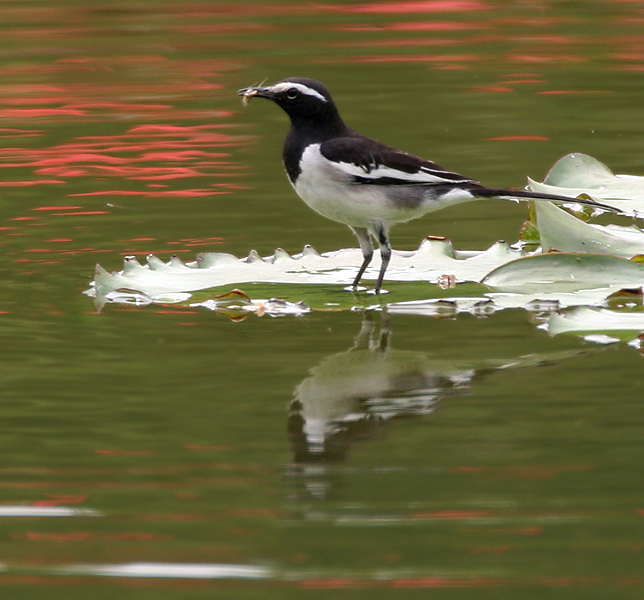
Wikipedia 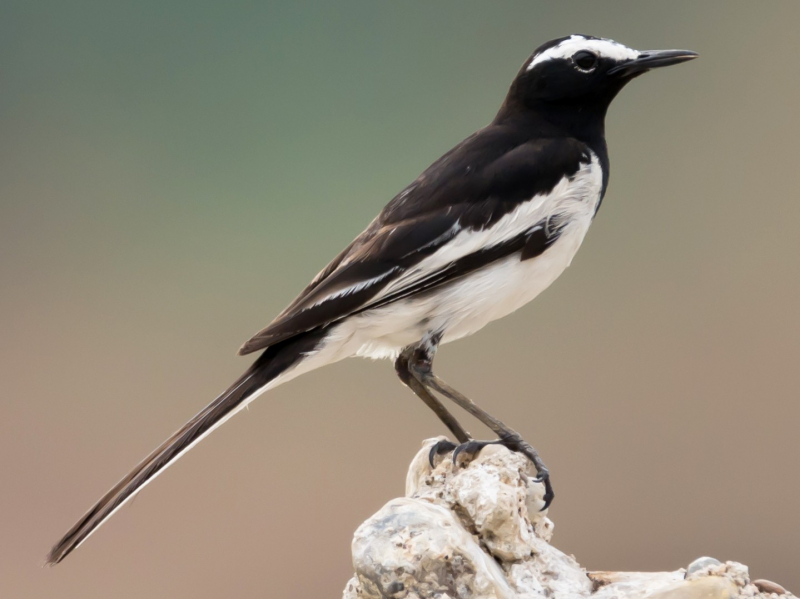
eBird -
The Oriental Magpie-Robin (Copsychus saularis) is a small passerine bird that was formerly classed as a member of the thrush family Turdidae but is now considered an old-world flycatcher. Occurring across most of the Indian subcontinent and parts of Southeast Asia, they are common birds in urban gardens as well as forests. They are particularly well known for their songs and were once popular as cagebirds. The oriental magpie-robin is considered the national bird of Bangladesh.
This species is 19 centimeters long, including the long tail, which is usually held cocked upright when hopping on the ground. The tail is typical of that of other birds when they are singing. Though longer-tailed, it has a form like the smaller European robin. A white shoulder patch is the only color on the male's upper torso, head, and throat. The long tail's sides and underparts are both white. Females are grayish-white below and have a greyish-black top. The upper parts and heads of young birds are brown and scaly.
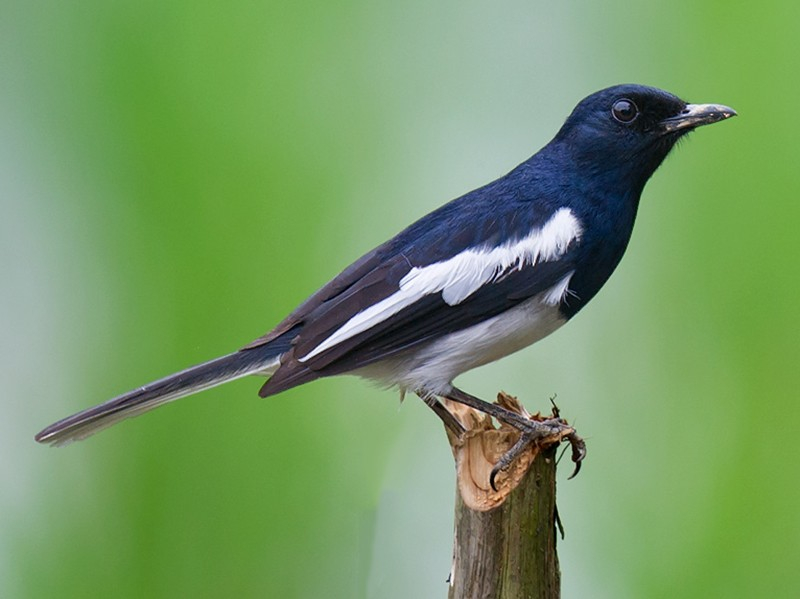
eBird 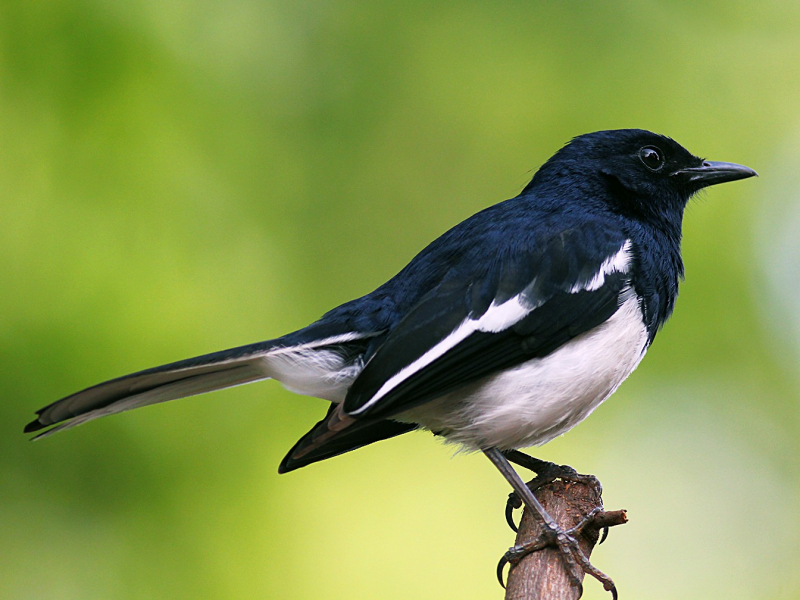
eBird -
The Black Phoebe (Sayornis nigricans) is a passerine bird in the tyrant-flycatcher family. It breeds from southwest Oregon and California south through Central and South America. It occurs year-round throughout most of its range and migrates less than the other birds in its genus, though its northern populations are partially migratory. There are six subspecies generally accepted, while the white-winged phoebe has two subspecies that are occasionally mixed.
A medium-sized flycatcher, the black phoebe measures 16 cm in length and weighs 15 to 22 g. Its main color is black, but it also has white under tail coverts and a white belly. The bottom breast's white creates an inverted "V" shape. The plumage does not differ seasonally and the sexes are identical. With cinnamon-brown feather tips on their body and brown wing bars, juveniles have browner plumage. The bird's legs, feet, and beak are all black, while its eyes are brown.
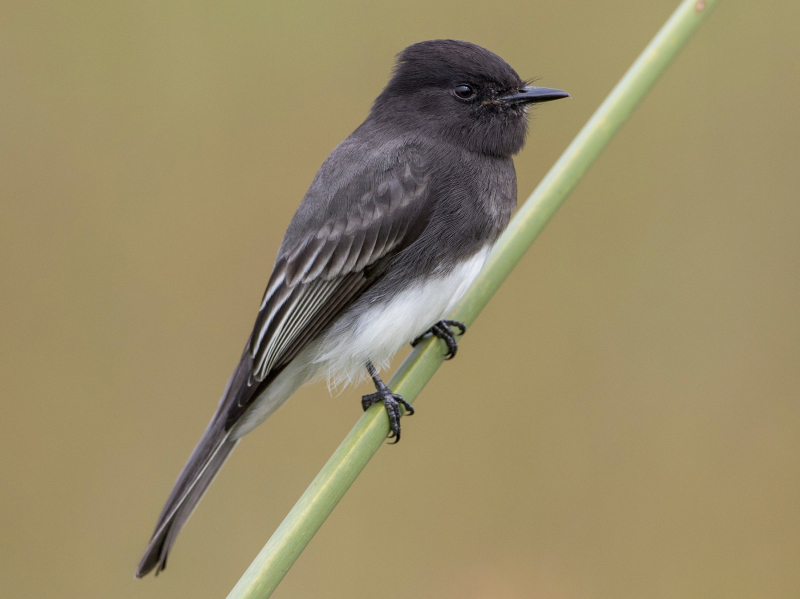
eBird 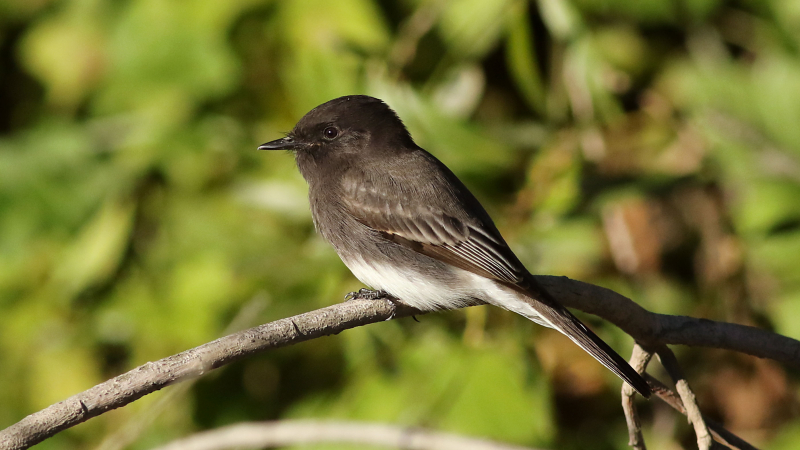
National Audubon Society -
The Black-Capped Chickadee (Poecile atricapillus) is a small, nonmigratory, North American songbird that lives in deciduous and mixed forests. It belongs to the Paridae tit family of passerine birds. It is the provincial bird of New Brunswick in Canada as well as the state bird of Massachusetts and Maine in the United States. It is well known for its ability to lower its body temperature during cold winter nights, its good spatial memory to relocate the caches where it stores food, and its boldness near humans (sometimes feeding from the hand).
The black-capped chickadee has a black cap and "bib" with white sides to the face. Its underparts are white, while its flanks are rusty brown. It has a gray back and a typically slate-gray tail. This bird has a long tail that is 58–63 mm in length, a long tarsus that measures 16–17 mm, and short, rounded wings that measure 8–9.5 mm in length. Its wingspan is 16–21 cm, total body length is 12–15 cm, and body weight is 9–14 g. Males and females have similar appearances, although males are significantly longer and bigger.
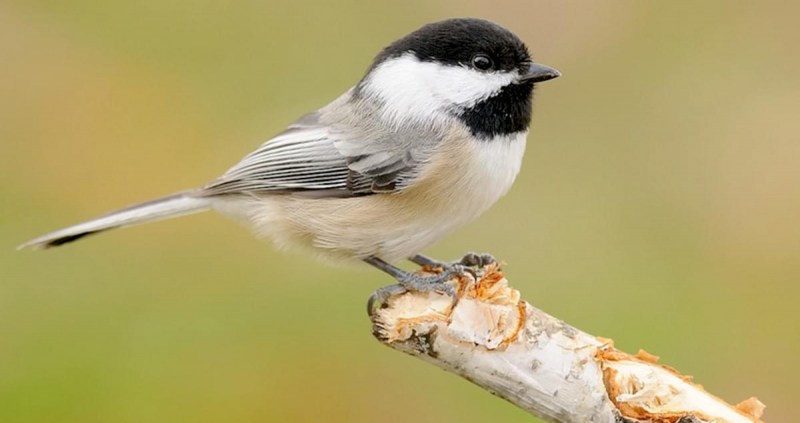
All About Birds 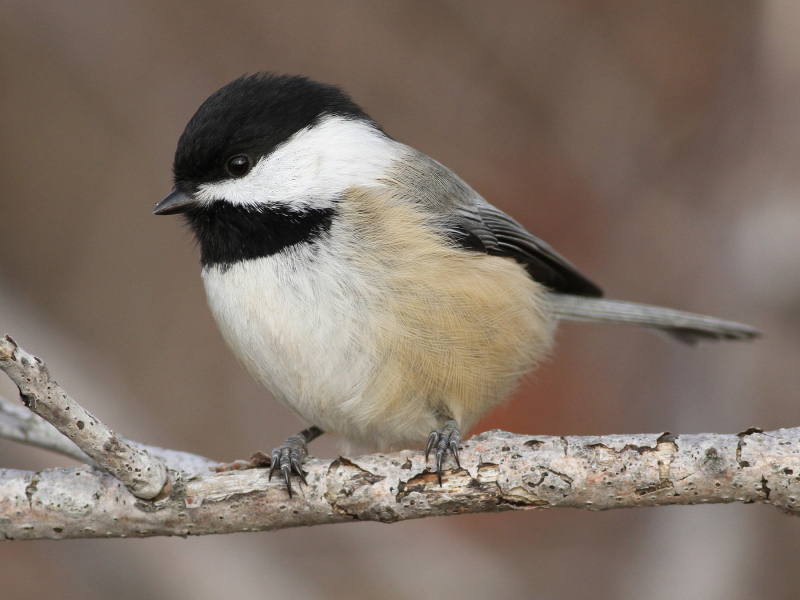
eBird












